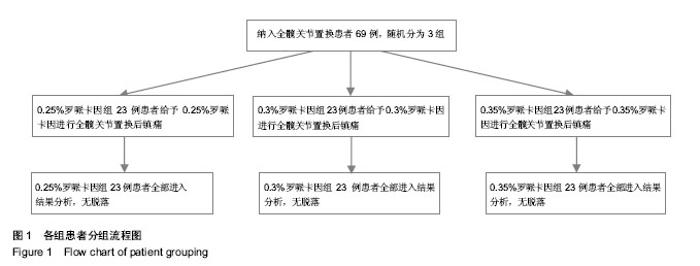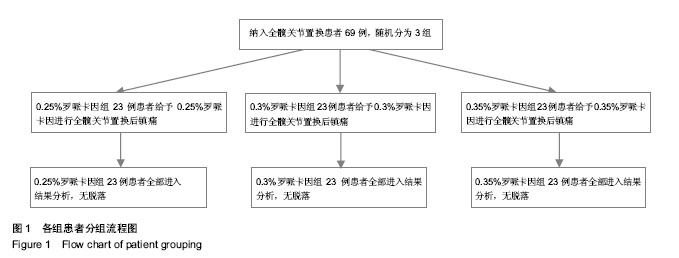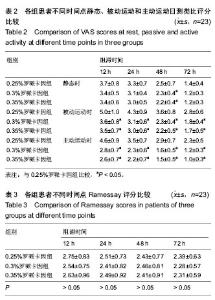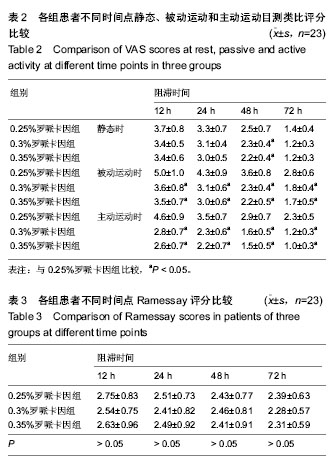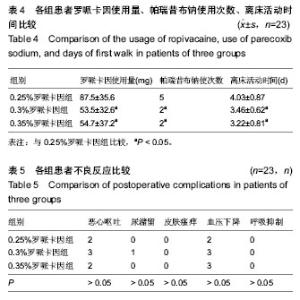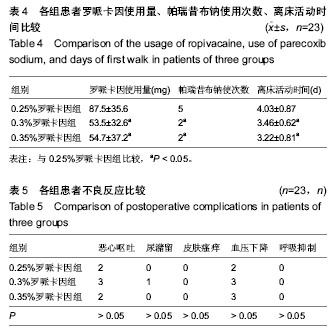| [1] Dulaney-Cripe E, Hadaway S, Bauman R, et al. A continuous infusion fascia iliaca compartment block in hip fracture patients: a pilot study. J Clin Med Res. 2012;4(1):45-48.
[2] 谭钢,罗磊,杨静,等.3664例全髋关节置换术相关危险因素分析[J]. 中国矫形外科杂志,2011,19(17):1431-1434.
[3] 曾秋荣.中老年股骨颈骨折全髋关节置换术和骨折内固定术临床比较[J].当代医学, 2012,18(1):92-93.
[4] 顾剑华,沈灏,陈云苏,等.髋关节置换术治疗老年股骨颈骨折的Meta分析[J].中华关节外科杂志(电子版), 2010,4(4):500-506.
[5] 孟景, 沈林,Todd Jackson,等.疼痛对心理的影响及其机制[J]. 心理科学进展,2011,19(10):1493-1501.
[6] 薛照静,黄宇光,赵晶,等.慢性术后疼痛研究进展[J].中国疼痛医学杂志, 2013,19(11):685-689.
[7] 王凤香.规范化术后疼痛护理改善急性术后疼痛的效果观察[J]. 中国现代药物应用, 2013,7(7):16-17.
[8] 胡承方,罗从风,陈云苏,等.髋部骨折术后疼痛管理的随机对照研究[J].中国骨与关节损伤杂志, 2012,27(12):1065-1068.
[9] Marques EM, Jones HE, Elvers KT, et al. Local anaesthetic infiltration for peri-operative pain control in total hip and knee replacement: systematic review and meta-analyses of short- and long-term effectiveness. BMC Musculoskelet Disord. 2014;15:220.
[10] Choi PT, Bhandari M, Scott J, et al. Epidural analgesia for pain relief following hip or knee replacement. Cochrane Database Syst Rev. 2003;(3):CD003071.
[11] 孙晓娟,张红星,董补怀,等.连续髂筋膜阻滞和硬膜外阻滞下行全髋置换后镇痛的比较[J].中国组织工程研究, 2014,18(31): 4934-4938.
[12] 魏长娜,王琛,单海华,等. 超声引导下髂筋膜腔隙阻滞对全髋关节置换术患者术后镇痛的效果[J].中华麻醉学杂志,2011,31(10): 1175-1177.
[13] 刘志龙,石翊飒.术后疼痛管理的研究进展[J].中国现代医药杂志, 2010,12(9):132-133.
[14] 王海棠,刘薇,黄宇光.手术后慢性疼痛的研究进展[J].临床麻醉学杂志,2012,28(11):1131-1133.
[15] 王浩洋,康鹏德,裴福兴,等.全髋关节置换术后多模式镇痛的有效性及安全性[J].中国矫形外科杂志, 2013,21(10):976-980.
[16] 张华峰,陈骏萍.舒芬太尼联合罗哌卡因用于老年全髋关节置换术后硬膜外自控镇痛的观察[J].现代实用医学, 2012,24(2): 151-152,174.
[17] 孙立,田晓滨,陈涛,等.局部浸润镇痛在老年全髋关节置换术后多模式镇痛中的作用及安全性[J]. 中华关节外科杂志(电子版), 2014,8(2):151-155.
[18] Li M, Wan L, Mei W, et al. Update on the clinical utility and practical use of ropivacaine in Chinese patients. Drug Des Devel Ther. 2014;8:1269-1276.
[19] 高尚龙.罗哌卡因硬膜外麻醉在老年患者全髋置换术中的应用[J].中国医药指南,2012,10(15):78-80.
[20] 陆有明,唐群杰,洪军,等.不同浓度的罗哌卡因和吗啡应用于硬膜外自控镇痛效果的比较[J]. 海南医学, 2008,19(1):66-67.
[21] Farag E, Dilger J, Brooks P, et al. Epidural analgesia improves early rehabilitation after total knee replacement. J Clin Anesth. 2005;17(4):281-285. |
